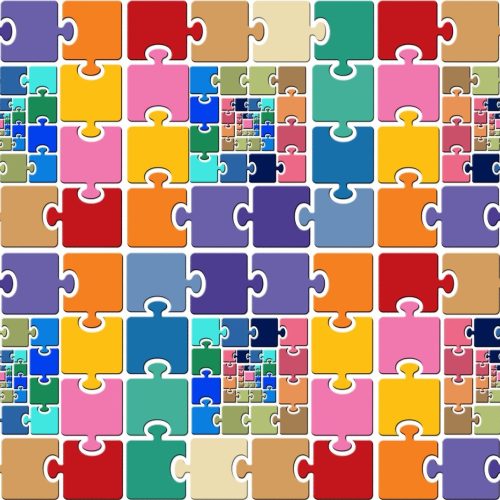How many companies resulting from the merger of several entities or the takeover of other companies have seen their overall value fall? Despite the considerable financial, commercial and legal expertise required, the examples are legion... We might therefore ask what dynamics are sufficiently powerful to frustrate these hopes of economies of scale and market multiplication? The answer often lies in the failure to take account of cultural and multicultural integration issues.
Contents

Why is multicultural management not a priority in international mergers and acquisitions?
First and foremost, an economic assessment
In France, multinational companies account for 1% of all companies, but they employ 51% of employees (Insee, 2020). This puts them at the forefront of the need for multicultural management.
These companies approach their activities from a primarily economic and commercial angle, which is a major challenge. M&A transactions are part of this approach. They are conducted on the basis of a large number of expert appraisals, evaluations and diagnoses. But economic analyses are no guarantee of a project's success. And human aspects, and more particularly cultural aspects, are rarely included among the risk indicators or future success factors. Probably because cultural differences often baffle company directors and M&A experts, for whom they are intangible differences.
The reality of the effects of cultural differences
The effects of cultural differences on the way a company is run are very real. Companies that live with different cultures in their teams find it harder than others to take decisions quickly and operate effectively. And sometimes, the whole decision-making process can get out of hand. Because even when it comes to something as objective as financial reporting, there are differences between countries in the way data is presented and interpreted!
Taking the time to understand and invest in intangible human capital culture is rarely taken for granted by managers. It is often seen as an expense, rather than as an asset in which to invest to ensure the reliability of the company's value.
Managers only come to take cultural parameters into account when they have exhausted the analysis of all the other factors of dysfunction and mismanagement. In the case of an international merger or acquisition, intercultural differences manifest themselves in a number of ways:
- Culture shock when merging with companies from other cultures
- Difficulty in controlling certain subsidiaries with very different cultures
- Adaptation problems for expatriate managers in the context of international mobility
Every M&A operation therefore requires considerable expertise in cultural integration, as well as financial and legal expertise. Today, how are the 'human' aspects of mergers and acquisitions taken into account, and more particularly their intercultural dimension? How else can we ensure team synergy and facilitate the implementation of joint projects?
Multicultural management as a last resort
Intercultural management is still all too often used as a crisis response to the now real risk of failure of an international merger or acquisition.. It is convened at the worst possible time, when each team has to do its usual work and, on top of that, integrate new values and new processes, when the workload is very heavy, when everything is moving very fast and when people don't always understand each other. multicultural teams. And that's how all the cultural rough edges, and the tensions that go with them, come to the surface.
Managers need to recognise that culture is both powerful and implicit, and that employees are unlikely to change their cultural beliefs simply because they are "asked" to adopt new cultural values. Culture, and the behaviours that flow from it, can quickly affect the value of the new entity.
So Why are we only interested in corporate cultures when it comes to financial risk, when it comes to the risk of losing the money invested?
How is multicultural management a key factor for success in this context?
To consider synergies between teams
Acquiring or merging entities involves bringing together employees who must work together to achieve common strategic objectives. But even between culturally close countries such as the United States and the United Kingdom, adaptations and readjustments are necessary at all times. This is why, before envisaging synergies between international teams, it is necessary to know how to identify the value systems and behaviours specific to each culture, in order to build mutual trust. It is necessary to understand each other, where the teams come from and their frame of reference, to better anticipate each other's behaviour and encourage team cohesion. We also need to reflect on the corporate culture and values of each entity, for example by analysing its organisation, procedures and remuneration systems.
Intercultural management identifies differences in culture and approach between decision-makers and teams in different countries, and teaches them how to work together to limit the risk of conflict within the company. It's a strategic tool that helps to create a recognition of differences and to understand the "intelligence" of each environment, of each entity. Through their differences, the teams complement each other, since different approaches to projects often lead to new solutions, based on their respective skills and strengths. This is particularly useful at those structuring moments when the resistance to change linked to business combinations are numerous.
The multicultural learning process
This learning process can be broken down into 3 interconnected and chronological elements:
- Emotional - employees involved in an international merger/acquisition are first made aware of the challenges of cultural differences. Working relationships with teams from other countries generally spontaneously trigger curiosity and interest.
- Cognitive - employees will gradually identify how cultural and management systems work, using intercultural management tools that explain, for example, differences in relationships to authority or time. This coherent framework helps them to better understand what they perceive as "odd" or "strange" behaviour on the part of their colleagues.
- Behaviour - everyone will finally invent and develop behavioural strategies more appropriate and effective.
Failing to integrate these 3 dimensions, and failing to prepare employees of several nationalities to work together, considerably increases the risk of failure of an international merger/acquisition. Getting people from different backgrounds and cultures to work together in the same company companyNot to mention team spirit, is what intercultural management is all about.

Two ways of making culture an asset in international mergers and acquisitions
We know that the cultural and intercultural dimension will rarely prevent a company merger or acquisition. It is therefore up to the managers who carry out these operations to prevent them from undermining the objectives they wish to achieve.
1. Carry out a cultural due diligence assessment beforehand
This makes it possible to map, measure and monitor an entity's values before and after the M&A operation. This makes it easier to reduce cultural entropy (i.e. the energy spent doing unproductive work) and increase the alignment of culture and strategy.
- By identifying cultural barriers and intercultural gapsThis can be seen, for example, in language and organisational methods. The vocabulary is rarely the same from one company to another. For example, the terms "project manager" and "plant manager" rarely correspond to the same scope from one company to another. A shared glossary is often useful.
- By defining the characteristics of the two organisational cultures (individual, relational, organisational, societal values, etc.). It's about knowing who you are and who you want to be. This is often referred to as a cultural "thumbprint".
- By identifying the values and levers of convergence to activate an appropriate shared culture in relation to the global strategy. It is then a matter for Comex of seeing how to integrate these divergent visions and complementarities within the framework of pre-existing values, and of seeing how this cultural integration will take the form of tools and methods shared across the board.
This diagnosis goes far beyond intercultural communication. It is often carried out by coaches and intercultural experts, is negligible compared to the scale of the M&A operation.to ensure the viability of future value creation at international level.
Aligning the human and business challenges of such an operation also means including elements that are perceived as intangible, such as corporate culture. Setting up a dedicated international team and identifying the most effective means of communication are important steps in establishing a harmonised vision. To do this, you need to identify the people who will represent cultural diversity, so that all points of view can be represented, even in a context of takeover. These "representatives" often belong to HR and regularly report on the progress of their work to the Executive Committee. It is useful to support them with external contributors, who bring an outside perspective to the identification of culture.
2. Downstream, start by facilitating the decision-making process
Post-merger integration is generally a time of great time pressure. Many tasks need to be completed quickly, in parallel with the new team building. This is the time for a targeted approach to working with everyone and reducing the ways in which cultural differences amplify the risks of failure.
Focusing on a common approach to decision-making helps to speed them up and make them more appropriate. The decision-making style is rooted in the culture of each company. The ability to make decisions has a direct and significant effect on the results of integration. At the risk of exposing yourself to a drop in customer and employee loyalty if the machine breaks down.
In reality, differences in decision-making are often less important than cultural differences in decision-making styles. There are several ways in which managers can tackle this problem with the support of the "cultural team":
- Identify the key decision-makers in each area of integration
- Identify the decision-making style associated with each corporate culture, to help them act more effectively in this multicultural context, and limit their communication difficulties.
- Communicate the timeframes within which decisions must be made and the acceptable level of reliability of assumptions, for example by encouraging decisions to be made with 80% of "certainty" rather than 100%.
In conclusion, the difficulties most often encountered in international mergers and acquisitions are linked to the lack of convergence between corporate and national cultures. Integrating the strengths of each culture and each team on the one hand, and establishing coherence between global strategy, cultures, organisational methods, managerial approaches and communication styles on the other, are challenges inherent in mergers and acquisitions. Cultural M&A, as company director, to coexist is to fail.



